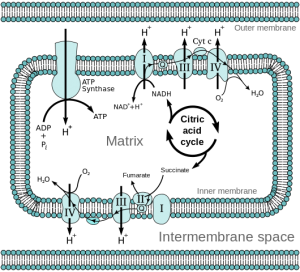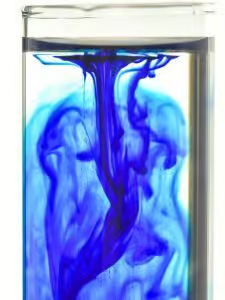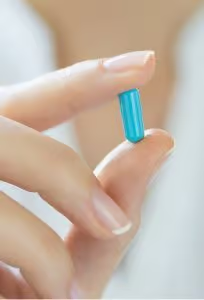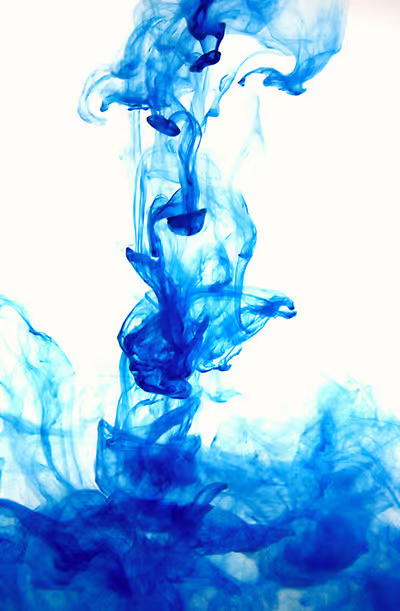Table of Contents
Key Takeaways
- Methylene Blue, a synthetic compound, is used as a nootropic to enhance memory, mood, and longevity.
- It improves mitochondrial function and respiration in the brain, positively impacting memory and mood.
- Methylene Blue shows promise in treating neurological disorders such as mild cognitive impairment, Alzheimer’s, and Parkinson’s disease.
- It acts as an antioxidant, increases brain cell lifespan, and positively affects neurotransmitters.
- Methylene Blue dosage recommendation is 0.5 – 4 mg/kg of body weight per day.
- In a hurry – click here to learn more about and buy Methylene Blue here: Click for CZTL – Methylene Blue
Methylene Blue (methylthioninium chloride) is a synthetic compound used as a nootropic to increase memory, mood and longevity.
Soon after Methylene Blue was synthesized a blue dye for textiles in the late 1800’s, it became the first synthetic drug to be used in humans. It was used for the treatment of malaria.
In the early 20th century, psychiatrists were using Methylene Blue in the experimental treatment of schizophrenia.[i]
Methylene Blue is currently being studied as potential therapy for mild cognitive impairment, Alzheimer’s and Parkinson’s disease, and other neurodegenerative disorders. All sharing a common problem with mitochondrial function.
Your brain’s neurons rely almost entirely on mitochondria-derived energy. Failure of mitochondrial function can affect the rest of your body. But it’s particularly detrimental to your brain.
This is where Methylene Blue steps in as possibly one of the most important anti-aging and neurological disease preventing nootropics we have available today.
As a nootropic, Methylene Blue quickly crosses the blood-brain barrier. It improves mitochondrial efficiency and respiration, acts as an antioxidant, and increases brain cell lifespan. Resulting in improved memory and mood.
Here we’ll dive into over 140 years of research on how Methylene Blue helps your brain.
Methylene Blue helps:
- Neurotransmitters: Methylene Blue inhibits monoamine oxidase and acetylcholinesterase activity which increases levels of catecholamines and acetylcholine. And boosts serotonin and norepinephrine affecting anxiety, depression and memory.
- Mitochondrial Energy: Methylene Blue assists brain cell respiration by increasing oxygen. And donating electrons to the electron transport chain within mitochondria. This same process is used to create ATP within mitochondria from the food you eat. So MB contributes to this energy-production process in place of the nutrients you get from your food. Increasing cellular energy positively effects mood and memory.
- Neuroprotectant: Methylene Blue is a potent antioxidant. Reactive oxygen species are produced inside mitochondria. The first free radical that is formed inside a cell is superoxide. MB will bind to superoxide and reduce it to water. It stops the oxidative cascade at its very beginning. Before it gets a chance to do damage.
Overview
Methylene Blue (methylthioninium chloride) was first synthesized in 1876 by German chemist Heinrich Caro at BASF as an aniline-based dye for cotton staining.

In 1891, German physician and Noble Prize recipient Paul Ehrlich pioneered the use of Methylene Blue for the treatment of malaria.[ii]
Ehrlich discovered that when MB was injected into animals in the lab, it would quickly concentrate in the brain. And had an uncanny ability to selectively target diseased tissues in the body.
It was Ehrlich who coined the term “Magic Bullet” for this unique action displayed by Methylene Blue. A term still in use today.
Methylene Blue has since been used to treat dementia, in cancer chemotherapy, malaria, methemoglobinemia, urinary tract infections, cyanide and carbon monoxide poisoning.[iii]
As a nootropic, Methylene Blue is used to enhance mitochondrial function, increase cerebral blood flow, and acts as an antidepressant.
How does Methylene Blue work in the brain?
Methylene Blue boosts brain health and function in several ways. But two in particular stand out.
- Methylene Blue improves memory. Unlike other nootropics which often work by increasing neurotransmitter synthesis and neural signaling, MB improves memory by increasing brain cell respiration. Or how the brain cell utilizes oxygen.
Studies show dramatic increases of cellular oxygen consumption and glucose uptake when using Methylene Blue. MB increases CMRO2 (cerebral metabolic rate) through increased activity in the mitochondrial electron transport chain.
 Methylene Blue functions as an alternative electron carrier in the electron transport chain in mitochondria. It accepts electrons from NADH and transfers them to cytochrome c.[iv]
Methylene Blue functions as an alternative electron carrier in the electron transport chain in mitochondria. It accepts electrons from NADH and transfers them to cytochrome c.[iv]
Cytochrome complex (cytochrome c) is a component of the electron transport chain in mitochondria. Playing a role in apoptosis and as an antioxidant.
Methylene Blue also stimulates glucose metabolism. Taken together, increases in CMRO2 and glucose uptake means that MB elevates oxygen consumption which helps glucose increase ATP production.
Increases in ATP production provides more cellular energy for better overall brain function including cognition, mood and memory.
- Methylene Blue is an antioxidant. MB has a unique mechanism of action that is fundamentally different from traditional antioxidants. During cellular respiration, the first free radical formed inside a cell is superoxide (O2).
Methylene Blue binds to superoxide and reduces it to water. It stops the oxidative cascade at its very beginning. Before it gets a chance to do damage.[v]
So think of Methylene Blue as having a unique dual property. First, it increases cellular energy production which normally leads to oxidative stress. And second, it eliminates this oxidative stress. Making it a metabolic enhancer and an antioxidant.
Researchers tested Methylene Blue in animal models of neurological disease. First, researchers used rotenone (a potent pesticide) which causes severe dopamine depletion in the part of the brain associated with Parkinson’s.
Methylene Blue rescued brain cell mitochondria from the damaging effects of this toxin. By donating electrons in the electron transport chain broken by rotenone. Essentially bypassing the broken transport chain with donated electrons as an alternative electron carrier.
Methylene Blue also countered cerebral ischemia reperfusion damage. The tissue damage caused when blood supply returns to tissue after a lack of oxygen from a stroke. And can occur with Traumatic Brain Injury. MB accomplished this by rerouting mitochondrial electron transfer.
And Methylene Blue dramatically countered the behavioral, neurochemical, and neuropathological impairment found in Parkinson’s disease.[vi]
How things go bad
As we live life, our brain chemistry and metabolism changes.
↓ Mitochondrial energy levels decline
↓ Attention, memory and mental agility decline
↓ Tau proteins and amyloid plaques clog the brain
↓ Free radicals damage brain cell mitochondria
↓ Cerebral blood flow declines
All of these changes can happen at any age. And are a product of the food we eat, what we drink, lifestyle habits, the air we breathe and more.
So Methylene Blue can help for age-related cognitive decline, as well as a student looking to do better in school. By boosting brain cell mitochondria energy production levels. And improving cerebral blood flow.
Methylene Blue benefits
Low dose Methylene Blue supplementation provides memory enhancing effects in animals and humans. It works as an antidepressant, is anti-aging, helps dementia, Huntington’s and Alzheimer’s.
Methylene Blue increases low blood pressure, improves cognition in healthy people, boosts mitochondrial function, is anti-microbial, can help eliminate fear and even slow skin aging.
Methylene Blue boosts acetylcholine
Research shows that Methylene Blue is an acetylcholinesterase inhibitor with a preference for muscarinic acetylcholine receptors. Meaning MB prevents the breakdown of acetylcholine and making more available in your brain.[vii]
Methylene Blue is an antidepressant
Methylene Blue is a monoamine oxidase inhibitor (MAOI). It inhibits MAO-A more than MAO-B, but inhibits both at large doses.[viii]
One study in 1987 showed that 15 mg per day of Methylene Blue was a potent antidepressant in those with severe depression.[ix]
Another study with 31 Bipolar Disorder patients compared 300 mg per day of Methylene Blue with 15 mg per day. The patients were also on lithium treatment. The study showed that the 300 mg dose of Methylene Blue was a “useful addition to lithium in the long-term treatment of manic-depressive psychosis”. And patients were significantly less depressed.[x]
Methylene Blue resists Alzheimer’s Disease
Alzheimer’s disease and other forms of dementia are associated with a buildup of the protein Tau. Clinical trials show that Methylene Blue inhibits Tau formation. And is under consideration as a treatment for Alzheimer’s.[xi]
Methylene Blue has an inhibitory action on the cGMP pathway, and affects other molecular events closely related to the progression of Alzheimer’s.
Methylene Blue boosts neuron resistance to the formation of amyloid plaques and neurofibrillary tangles. And helps repair impairments in mitochondrial function and cellular metabolism.
Research also shows that cholinergic, serotonergic and glutamatergic systems all play important roles in the development of Alzheimer’s and other cognitive disorders. Methylene Blue provides beneficial effects in mediating these pathways.[xii]
This is particularly significant because most existing treatments for Alzheimer’s can only prevent the disease before it is diagnosed. But Methylene Blue shows promise in delaying the effects of Alzheimer’s and dementia after it is diagnosed.
Methylene Blue is anti-aging
 Research shows that Methylene Blue is an effective anti-aging nootropic. MB increases mitochondrial complex IV by 30%, enhances cellular oxygen consumption by 37-70%, increases heme synthesis, and reverses premature senescence caused by H2O2 or cadmium.
Research shows that Methylene Blue is an effective anti-aging nootropic. MB increases mitochondrial complex IV by 30%, enhances cellular oxygen consumption by 37-70%, increases heme synthesis, and reverses premature senescence caused by H2O2 or cadmium.
Methylene Blue is considered a redox agent. Meaning it cycles between oxidized and reduced forms. This cycling by MB helps block oxidant production in brain cell mitochondria.[xiii]
Mitochondrial complex IV is the last enzyme in the respiratory electron transport chain in mitochondria. The last step in synthesizing ATP. Your cellular source of energy.
Iron (heme) is an essential element and participates in oxygen transport, DNA synthesis and electron transport. Heme synthesis begins in mitochondria. Every cell requires heme to function properly.[xiv]
Senescence or biological aging is the gradual deterioration of cellular function. And is caused by telomere shortening that triggers DNA damage in response to reactive oxygen species, hydrogen peroxide (H2O2), cadmium and other toxins. Methylene Blue helps prevent premature senescence or premature cell death.
Methylene Blue improves memory
Animal studies have shown that a single low dose of Methylene Blue enhances long-term contextual memory. This type of memory is the conscious recall of the source and circumstances of a specific memory.
Other studies show that Methylene Blue in low doses taken after the event helps memory retention of the event. A study done with rats revealed why this works.
In this study, rats received 1 mg/kg of MB post-training for 3 days. The researchers then measured cytochrome c oxidation in participants brains. The idea was to determine if an increase in metabolic energy was behind the memory enhancing qualities of MB.
The study found that in the Methylene Blue treated group, brain cytochrome oxidase activity was 70% higher than in the placebo-treated group.
The findings suggest that repeated post-training supplementation of Methylene Blue improves memory consolidation. And this memory boost is due to the increased metabolic capacity in brain regions that require more energy during discrimination learning.[xv]
How does Methylene Blue feel?
 Many who use Methylene Blue say if you try this nootropic that you will likely feel different than any other supplement you’ve ever tried.
Many who use Methylene Blue say if you try this nootropic that you will likely feel different than any other supplement you’ve ever tried.
Neurohackers report when reading or studying, once you’re done, you should feel like you fully understand the subject material. And you’ll be able to use what you learned in the future.
Methylene Blue seems to facilitate a full understanding of something on the first try.
Many neurohackers report the biggest nootropic effect they experience with Methylene Blue is “after the fact learning”. You take in the information. And it’s like your brain sorts through the material. Then stores it in a form you can easily access later.
Methylene Blue has this uncanny ability to rewire your brain to forget about any negative associations you have of a situation. And only retains the positive aspects of that memory.
Some report that Methylene Blue makes you “feel young again”. It eliminates social anxiety. You’ll feel focused and more confident.
Some say that workouts seem easier because you have more energy. Your mitochondria are energized. And you may find that recovery from workouts is easier.
Some users love its anxiolytic benefits because Methylene Blue helps eliminate stress. So you have more energy in any situation with a relaxed state of mind.
And one recurring theme from many is improved sleep while using Methylene Blue.
Methylene Blue Clinical Research
Research into Methylene Blue for its therapeutic value goes back to the late 1800’s. But it’s only in the last couple of decades that scientists have been able to decode exactly how Methylene Blue works in the brain. All the way down to the molecular level in mitochondria.
A study in 2017 found that Alzheimer’s Disease could be caused by more than the accumulation of amyloid beta in the brain. The scientists looked into the two main components that produce energy in cells.
- Glycolysis is the mechanism used to convert glucose into fuel within mitochondria.
- Creating this fuel in mitochondria uses oxygen in a process called mitochondrial respiration.
The researchers found that as the brain ages, mitochondrial metabolism deteriorates. Resulting in a reduction in the molecules needed for energy production. And possibly the main culprit behind many neurological diseases including Alzheimer’s and Parkinson’s.[xvi]
A study conducted at Children’s Hospital Oakland Research Institute may have found the solution to this mitochondrial energy problem in brain cells.
The researchers found that Methylene Blue can prevent or slow the decline of mitochondrial function.
One of the key aspects of Alzheimer’s is mitochondrial dysfunction. Specifically complex IV dysfunction. And this is where Methylene Blue steps in.
The study found that Methylene Blue enhances complex IV in mitochondria. It increases oxygen consumption. And it reverses premature cell death.
The researchers concluded that Methylene Blue may be useful to delay mitochondrial dysfunction with aging and the decrease in complex IV in Alzheimer’s disease.[xvii]
Methylene Blue Improves Memory
26 healthy volunteers aged 22 – 62 participated in a double-blind, randomized, placebo-controlled clinical trial. Purpose of the study was to measure the effects of Methylene Blue on working memory and sustained attention.
Study results showed that a single low-dose of Methylene Blue resulted in an increase in short-term memory ability. In an area of the brain associated with the senses and visual processing.
Timothy Duong, Ph.D., the study author concluded Methylene Blue showed promise “in healthy aging, cognitive impairment, dementia and other conditions that might benefit from drug-induced memory enhancement”.[xviii]
Another study published in the American Journal of Psychiatry tested fear extinction (elimination of fear) and contextual memory. Both are forms of long-term memory.
In this study, participants received either Methylene Blue or a placebo after being placed in a small dark chamber for a couple of minutes to address their fear.
One month later, participants that had used Methylene Blue had less retained fear than those given a placebo. The study authors concluded, “Methylene Blue enhances memory and the retention of fear extinction”.[xix]
Methylene Blue helps Bipolar Disorder
Animal studies have demonstrated that Methylene Blue can provide antidepressant and anxiolytic benefits. Possibly because it can increase serotonin and dopamine levels.
Canadian researchers noted that Methylene Blue also improved mitochondrial function and decreased oxidative damage. So, they hypothesized that Methylene Blue may be effective for bipolar disorder symptoms if combined with lamotrigine which is used as a mood stabilizer.
This study at Dalhousie University in Halifax compared the effectiveness of lamotrigine (Lamictal®) along with daily supplementation of either 195 mg or 15 mg of Methylene Blue in patients with Bipolar Disorder.
Patients took a dose (Lamictal and either 195 mg or 15 mg of Methylene Blue) for three months. Then proceeded to reduce Methylene Blue dosage for an extended period of 3 months. The team found that bipolar participants had reduced depression and anxiety when taking the higher dose of Methylene Blue compared to when they were on the lower dose.
Several Bipolar Disorder patients in the study chose to continue using Methylene Blue after the study concluded.[xx]
Methylene Blue Dosage Recommendations
Recommended safe doses based on clinical studies with animals and humans ranges from 0.5 – 4 mg/kg. So a 90 kg (200 lb.) body weight translates to 45 – 360 mg of Methylene Blue.
 45 mg of a Methylene Blue dose is a safe. But 360 mg of MB is much too high in my opinion even if you’re 200 lbs.
45 mg of a Methylene Blue dose is a safe. But 360 mg of MB is much too high in my opinion even if you’re 200 lbs.
The bottom line is there is no true recommended dose for Methylene Blue. My recommendation is start with the lowest dose of 0.5 mg/kg and see how you react. A repeat dose may be taken if no effects occur.
Methylene Blue is water-soluble so you don’t need to take it with a meal, or healthy fat like some nootropics.
Methylene Blue has a half-life of about 5 hours. So you can dose twice a day.
Methylene Blue is famous for turning urine blue. But for most neurohackers, your urine will only stain blue at doses roughly exceeding 500 mcg. Some recommend preventing blue urine by mixing Methylene Blue with ascorbic acid for 3 hours before taking it.
Methylene Blue is also available as a doctor-administered injection for therapeutic use. IV Methylene Blue is typically used to treat diseases like malaria or with anti-cancer therapy.
Methylene Blue Potential Drug Interactions & Side Effects
Methylene Blue shows a hermetic dose-response, with opposite effects at low and high doses.
In other words, lower doses of Methylene Blue work well as a nootropic. But high doses do not because MB can potentially “steal” electrons away from the electron transport chain. Disrupting the redox balance and acting as a pro-oxidant (instead of an antioxidant).[xxi]
 Adverse effects of Methylene Blue also come from chemical impurity. Even pharmaceutical (USP) grade Methylene Blue can contain impurities like arsenic, aluminum, cadmium, mercury and lead which puts you at increased risk for heavy metal toxicity.
Adverse effects of Methylene Blue also come from chemical impurity. Even pharmaceutical (USP) grade Methylene Blue can contain impurities like arsenic, aluminum, cadmium, mercury and lead which puts you at increased risk for heavy metal toxicity.
At low doses, these contaminants are not that big of a problem. But higher doses will result in the accumulation of these toxins in your cells. Doctors should monitor patients with any hepatic impairment due to toxins related to high doses of serotonergic drugs like Methylene Blue.
Side effects with Methylene Blue are rare when doses are under 2 mg/kg. But can include stomach pain, chest pain, dizziness, headache, sweating, confusion, high blood pressure, shortness of breath, accelerated heartbeat, tremor, skin turning blue, urine turning blue or green, reduction of red blood cells, or jaundice (only reported in infants).
Reduce the Risk of Serotonin Syndrome
Monoamine Oxidase (MAOI) inhibition becomes a big problem at around 2 mg/kg of Methylene Blue. So if you are using antidepressants or antianxiety medications that affect dopamine or serotonin, you should NOT use Methylene Blue.
Because using Methylene Blue with one of these medications could cause possible interactions resulting in a hypertensive crisis or Serotonin Syndrome. Which can be deadly.
This includes not using Methylene Blue if you are using any selective serotonin reuptake inhibitors (SSRI’s) and monoamine oxidase inhibitors (MAOI’s) including 5-HTP, bupropion, buspirone, citalopram, clomipramine, doxepin, duloxetine, escitalopram, fluoxetine, fluvoxamine, MAOIs like Marplan, Nardil, and Parnate, milnacipran, mirtazapine, paroxetine, rasagiline, sertraline, selegiline, St. John’s wort, trazodone, tryptophan, Zimelidine, and venlafaxine.
The above list is my no means complete nor does it include all of the drugs that may be contraindicated with Methylene Blue. Check with your health care provider if a drug or supplement you are using may also be contraindicated with this nootropic.
Do not use Methylene Blue if you are pregnant or breast-feeding. Or if you are dealing with any type of renal impairment.
Where to buy Methylene Blue
Methylene Blue is sold as a liquid, and in crystalline powder form.
Industrial-grade and chemical-grade Methylene Blue is sold as a dye or stain. And can consist of more than 8% – 11% of various contaminants. And should NOT be used as a nootropic.
Only pharmaceutical (USP) grade Methylene Blue should be used as a nootropic. Ask for a Certificate of Analysis which should include the amount of contaminants such as arsenic, aluminum, cadmium, mercury and lead.
I recommend Click for CZTL – Methylene Blue due to their robust testing program. They ship in 1 gram containers of powder with dosage and mixing instructions in each shipment. Along with a Certificate of Analysis (CofA) verifying the purity of the Methylene Blue you get from them.
Another option in liquid form is Click for Science.bio – Methylene Blue which is pre-mixed. And use the coupon code: davidtomen10 for a 10% discount when you check out.
Nootropics Expert Recommendation
 Methylene Blue 0.5 – 4 mg/kg of body weight per day
Methylene Blue 0.5 – 4 mg/kg of body weight per day
I recommend using Methylene Blue as a nootropic supplement.
Your body does not make Methylene Blue on its own. So to get its benefits you must take it as a supplement.
Methylene Blue is especially helpful for those dealing with anxiety and depression.
Methylene Blue is also particularly useful to students and executives who want to boost cognition, learning and memory.
Methylene Blue is a fast-acting nootropic that can also help prevent brain mitochondrial degeneration. Providing potential as an anti-aging nootropic.
Methylene Blue donates electrons in the electron transport chain in your mitochondria. So experienced neurohackers suggest avoiding CoQ-10 or idebenone when using MB because it seems to make Methylene Blue much less effective. Remember earlier in this review when I said the too much Methylene Blue can be counter-productive. The same applies here.
Idebenone is an Alzheimer’s drug that has some nootropic benefit. But it works similar to Methylene Blue because it acts as a transporter in the electron transport chain in mitochondria. Possibly potentiating Methylene Blue.
I recommend Click for CZTL – Methylene Blue
Or Click for Science.bio – Methylene Blue which is pre-mixed. And use the coupon code: davidtomen10 for a 10% discount when you check out.










Join The Discussion - 879 comments
Rich
September 6, 2019
Arsenic at 8ppm is that safe in the MB I have
David Tomen
September 9, 2019
Rich, the U.S. Department of Health and Human Services has set and published a standard for arsenic in food to be limited to 0.5-2 parts per million. https://www.atsdr.cdc.gov/csem/csem.asp?csem=1&po=8. So the MB you have sounds like it’s over the limit for arsenic to be safe to consume. Where did you get it from?
Ryan
June 29, 2020
Looks like maybe Mito lab?
COA results
This product uses an ultra-pure, USP-verified source of Methylene Blue, which has been stringently tested to ensure high purity and extremely low levels of contamination.
Minimum Purity >99.5%
Arsenic (As) <8ppm
Iron (Fe) <100ppm
Lead (Pb) <20ppm
Zinc (Zn) Passes test
Loss on Drying <10%
David Tomen
June 30, 2020
Ryan, for occasional use it should be OK. But the heavy metal count is high enough that long-term use would not be a good idea.
kong
July 11, 2019
hi david,
do you where i can get MB. I try to find in amazon and it is all industrial or research uses. blue brain boost is also not selling MB anymore. any idea where i can get it online?
David Tomen
July 11, 2019
Kong, Sigma Aldrich in the USA is the only company I’m aware of that offers a “pharmaceutical grade” Methylene Blue. Google the company name AND methylene blue and look for the pharmaceutical grade version they sell.
Stefan
July 11, 2019
I am able to buy USP PHAM GRADE FROM A COMPANNY IN NEW YORK
THAT sells to universities and Researchers like myself.
Best does according to Dr Bruce ames The top authority is between 40 to 160 my daily.
I take 5 dropperfuls and it gives me me about 100mg daily.
Best I have ever felt.
I truly believe this is the panacea we have been looking for for
The millions of people who have brain damage from long term opioid and opiates.
The reset is phenomenal
Kong
July 11, 2019
I manage to find the official website of sigma aldrich however they didn’t indicate which one is pharmaceuticals version. https://m.sigmaaldrich.com/SG/en/search?term=methylene+blue.
Their grades are Analytical , Microscopy,Certified by the Biological Stain Commission, BioChemika, Microbiology.
I also google the whole night and found biohackers taking brands like health natural, ideallabs and mitolabs
Health natura seems like not for human consumption as stated. Ideallabs has oxidal but it’s not a pure form and is mixed with caffeine and benxoic acid.
Finally mitolab look decent and with 99% purity. https://mitolab.com/2017/11/hello-world/
David Tomen
July 12, 2019
Kong, you’ll need to contact Sigma Aldrich and find out which one is pharmaceutical grade. The MB from Mitolab looks like it could be OK.
kon
July 21, 2019
Thanks for the reply
sigma aldrich is unwilling to sell to consumers for personal use and only to organization in my country. Mito lab send me a COA but i am not sure whether it is genuine. Thank for everything.
stefan bajon
June 29, 2019
David, I have been researching MBLUE FOR a couple of years now and have scoured the research around the world.
Dr Bruce Ames told me this is the best compound a human could take and I would be honored to share my findings with you.I would also like to share my recovery story with you. I got addicted to oxycontin from 3 failed back surgeries. I
USED M BLUE to help heal
My damaged brain opioid damage.
Stefan
David Tomen
July 2, 2019
Stefan, you can use the contact form on the Contact page in the menu to send me and email.
stefan bajon
June 29, 2019
I thought I left a comment here on Methylene blue but it did not get posted. I just heard back from Se Novak who is in Germany at seminar on Methlene blue and Ise with Lasers and other light frequencies.
Wondering if my post are going through.
Stefan
Sara
May 25, 2019
I’ve read that the effects of Methylene glue are enhanced when used with infrared light. After taking it would sitting in an infrared sauna enhance the benefit?
Thank you in advance for your help!
David Tomen
May 27, 2019
Sara, haven’t tried it. If you could point to clinical studies supporting this I’d appreciate it.
Jenifer
May 14, 2019
Hi- I am so confused about the dosage. I have a bottle where it states 1 drop is .5mg. and the bottle is 30ml and on it it has on the lable 50mg/ml
Just from reading and looking at some podcasts I am doing 3-4 drops a day. I weight 60kg. Is that to little? Also to get the stain out use Ascorbic acid or vitamin c it oxidizes the blue out of the mb.
Do you have any idea how I can put some of this in a creme. I saw info of .5um in a mixture but it am worse at math then you and not matter how I tried to figure it out I was just so confused. I need to call a chemist at this point.
David Tomen
May 15, 2019
Jennifer, I was using 45 mg of MB per day and I’m about 200 lbs. 4 drops per day with the MB you have looks like about 2 mg so I’d say the dosage is way too low to see any benefit.
The lowest recommended dosage from human and animal studies is 0.5 mg/kg so if you followed that dosage your MB would be 60 drops.
Pierre v A
May 3, 2019
I take citrulline to promote blood flow. However, I note there are articles with titles such as “Inhibition of nitric oxide synthesis by methylene blue”. Should I avoid taking citrulline (or arginine) at the same time as MB?
David Tomen
May 3, 2019
Pierre, Methylene Blue does not interfere with nitric oxide synthesis: https://www.ncbi.nlm.nih.gov/pmc/articles/PMC4810576/
Pierre v A
May 4, 2019
Thanks for the link. Very interesting. Yet diagram in the article shows my concern still exists (in one direction): could MB neutralize the beneficial effect on blood flow derived from NO, regardless of the fact that it doesn’t affect the production of NO? In other words, would it be futile to take citrulline while taking MB?
David Tomen
May 4, 2019
Pierre, I understand your concern. I use citrulline regularly and it still provided the benefits I was looking for when using Methylene Blue.
Darin
April 28, 2019
Hi ,
I found this Methylene blue on Amazon. I emailed the company to ask if pharma grade . They email me back that”Our Methylene Blue is used for laboratory research only. It is not pharmaceutical grade. ”
They gave me there spec sheet below :
Product Specifications
800-253-4942 IBISCI.com An ISO 9001 Certified Company
METHYLENE BLUE
Product Number Size IB74050 25gm
PHYSICAL SPECIFICATIONS
Formula Weight 373.9 Molecular Formula C16H18CIN3S 3H2O Em (661nm, water) > 69,000 Arsenic 0.0008% Copper < 0.01% Moisture Max. 15.0% Zinc < 0.001% Lead < 0.001% Dye Content (Dry Basis) 98 – 103%
STORAGE
Store at room temperature. Protect from moisture.
RECOMMENDED USE
IBI’s Methylene Blue is a recommended stain for agarose gels when recovery of DNA is required. The benefit of using Methylene Blue (rather than Ethidium Bromide) is the ability to use a white light box for visualization and photography in place of a UV light box. Using a white light box eliminates mutations that may effect the integrity of the isolated DNA. 1.) Stain a 1% gel for 15 minutes with 0.02% Methylene Blue Solution in distilled water. 2.) Destain with distilled water for 15 minutes.
Used for staining RNA that is bonded to nylon and nitrocellulose membranes. 1.) Soak the dried filter in 5% acetic acid at room temperature for 15 minutes. 2.) Place the filter in 0.5M Sodium Acetate (pH 5.2) and 0.04% Methylene Blue Solution for 5 – 10 minutes at room temperature.
FOR RESEARCH AND DEVELOPMENT PURPOSES ONLY
CAS NO.
CAS# 7220-79-3
WARNING
Classification: Skin Irritant – 2 Eye Irritant – 2 Hazard Statements: H315-Causes skin irritation • H319-Cause serious eye irritation • H335-May cause respiratory irritation. Precautionary Statements: P280-Wear protective gloves/ protective clothing/eye protection/face protection • P302+P352-IF ON SKIN: Wash with plenty of water • P304+P341-IF INHALED: If breathing is difficult, remove victim to fresh air and keep at rest in a position comfortable for breathing • P305+P351+P338-IF IN EYES: Rinse cautiously with water for several minutes. Remove contact lenses, if present and easy to do. Continue rinsing
WARNING!
I B I SCIENTIFIC 74 4 5 C h a v e n e l l e Road Dubuque, I A 5 2 0 0 2 – 9 6 6 4 USA 02/07/2019
Do you think it is safe for ingestion?
Thanks
David Tomen
April 29, 2019
Darin, this is certainly not “Pharma Grade” Methylene Blue. Sigma Aldrich in the USA is the only company I’m aware of that offers a “pharmaceutical grade” Methylene Blue.
stefan bajon
June 29, 2019
There are other companies, but they will only sell to Big PhArma,Hospitals, and Reaearch universities.
hart
June 22, 2020
david,
i’m wondering if you can comment further with respect to the methylene blue produced by IBI Scientific. i have looked at their certificates of analysis and they show extremely low levels of metal contamination, which is obviously a concern. if independent assays demonstrate low level of contamination, what distinguishes this product from one you would recommend as safe for consumption?
Arsenic <0.0008 <0.0005 % PASS
Zinc <0.001 <0.001 % PASS
Copper <0.01 <0.01 % PASS
Lead <0.001 <0.001 % PASS
Dye Content (Dry Basis) 98-103 % PASS
Identification PASS PASS P/F PASS
DNase NONE NONE PASS
RNase NONE NONE PASS
Protease NONE NONE PASS
David Tomen
June 23, 2020
Hart, specifications for methylene blue are published in several official pharmacopoeias for human use. You’ll find them in this table: https://www.ncbi.nlm.nih.gov/books/NBK350467/table/a011.T001.002/?report=objectonly
Compare whatever MB blue you’re considering to what’s suggested in that table to ensure you’re getting something safe for human use.